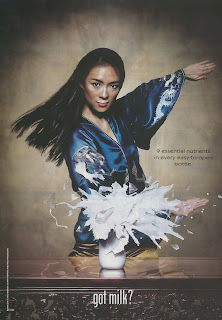So, Ichadon, in classic Korean style, offered to stage an elaborate ruse that would end in his execution, after which Beopheung would have the justification for adopting Buddhism as a state religion. Basically, Ichadon predicted that at his execution, a miracle would occur and the nobles would be convinced of the errors of their ways. What that miracle actually involved is explained in this passage:
“When Ichadon was executed on the 15th day of the 9th month in 527, his prophesy was indeed fulfilled; the earth shook, the sun was darkened, beautiful flowers rained from the sky, his severed head flew to the sacred Geumgang mountains, and milk instead of blood sprayed 100 feet in the air from his beheaded corpse – all this a token of heaven’s acceptance of his just martyrdom.”
Milk? Seriously? I have batted this around with friends, family and other Korean amateur historians and we are rather perplexed by the inclusion of milk. Not rice? It would obviously have to be soy milk, right?
Regardless, that is a rather strange image of a severed head ascending to the mountains and milk spraying everywhere. Sounds more like a horrible kitchen accident.

